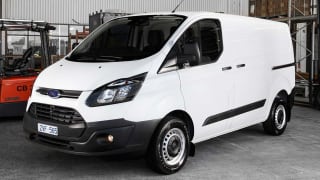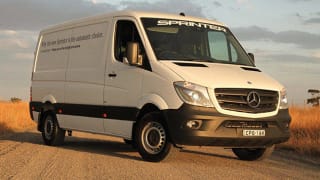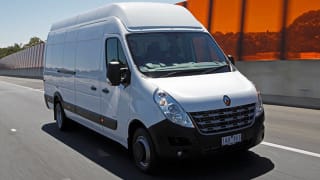I have to admit I was shocked when I showed up to collect this VW Crafter and it was finished in Deep Ocean Blue. I mean, I don’t think of vans this size coming in anything other than white or maybe black, which are of course also available. But with other colours available like Cherry Red, Luminous Orange, Reflex Silver or Indium Grey, there’s a Crafter to suit different business needs. These could essentially be billboards on wheels.
There’s a typically Teutonic approach to the exterior styling of the Crafter. It is boxy, yes, and it probably isn’t as attractive as some of the other big vans out there, even if the subtle chrome trim line across the grille is a welcome flourish. You can option a Trendline Styling Package which adds more chrome inside and out, too, but the large halogen headlights and simple 16-inch steel wheels combine to scream ‘work-focused’.
Of course, being a commercial van, there are options aplenty in terms of customisation. This tester was almost as it comes from the factory - fitted with one sliding side door only, and the rear barn doors which come as standard, too.
If it were me, I’d be considering a second side door, and - if possible - probably some side glazing because it’s a bit hard to see over your shoulder. That said, the split side mirrors with a lower wide-angle lens help to see what’s lurking in your blind spots, and the high-mount reverse camera is very helpful.
The dimensions of our test vehicle are 6836mm long on a 4490mm wheelbase, 2590mm tall (that jumps to 2798mm with the super-high roof), and 2040mm wide (the mirrors are big, though, pushing width to 2427mm).
Inside the cabin of the Crafter, things are impressive - there’s a nice small steering wheel (the same as you’d get in a base model Golf, if VW sold one without leather wrapping), and the controls are all very logically positioned. It feels like a car from the driver’s seat, and there’s excellent adjustment on offer to find your perfect driving position, which is important to professional drivers.


























